Fact Sheets
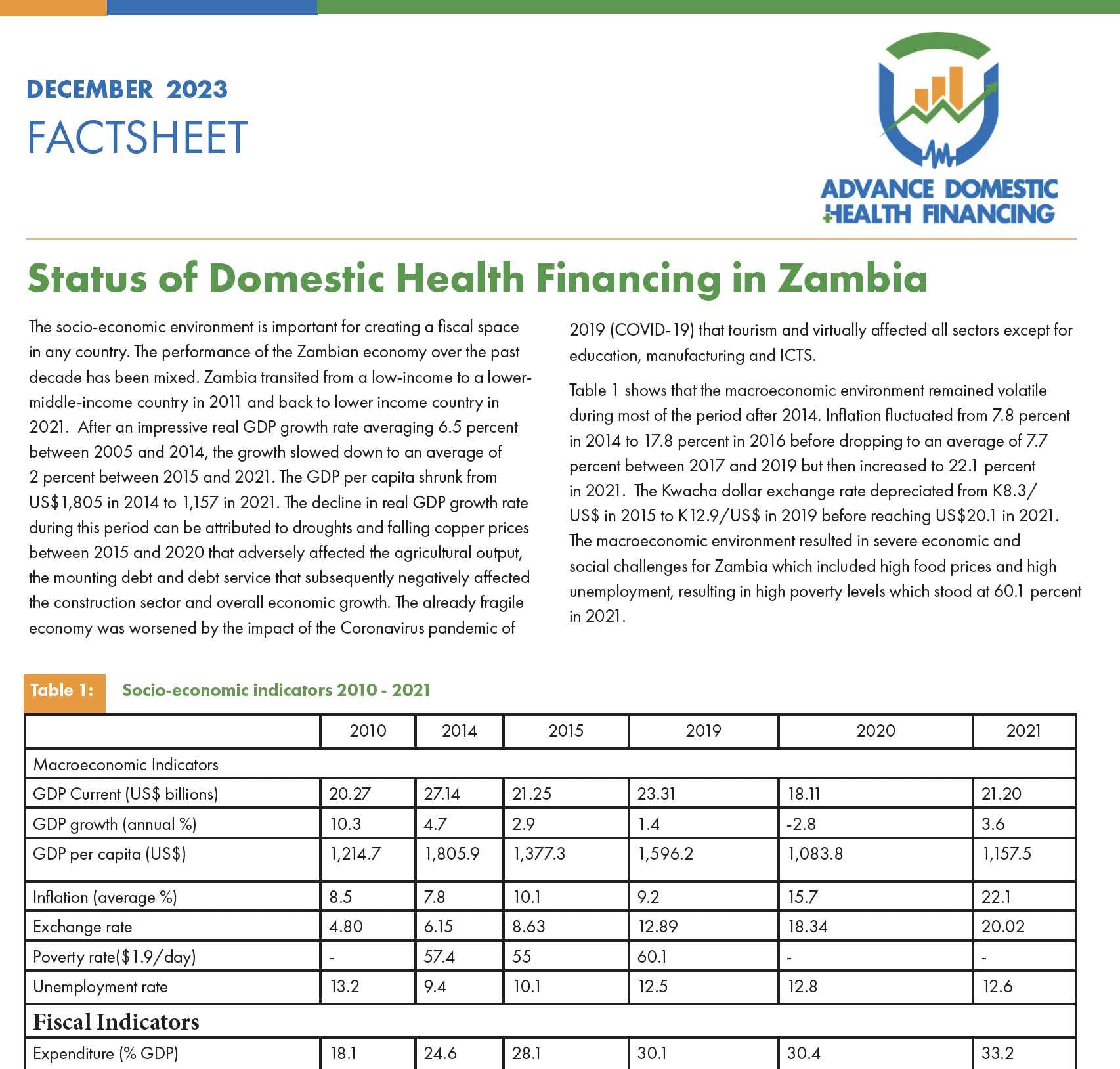
The socio-economic environment is important for creating a fiscal space in any country. The performance of the Zambian economy over the past decade has been mixed. Zambia transited from a low-income to a lower-middle-income country in 2011 and back to lower income country in 2021. After an impressive real GDP growth rate averaging 6.5 percent between 2005 and 2014, the growth slowed down to an average of 2 percent between 2015 and 2021. The GDP per capita shrunk from US$1,805 in 2014 to 1,157 in 2021. The decline in real GDP growth rate during this period can be attributed to […]
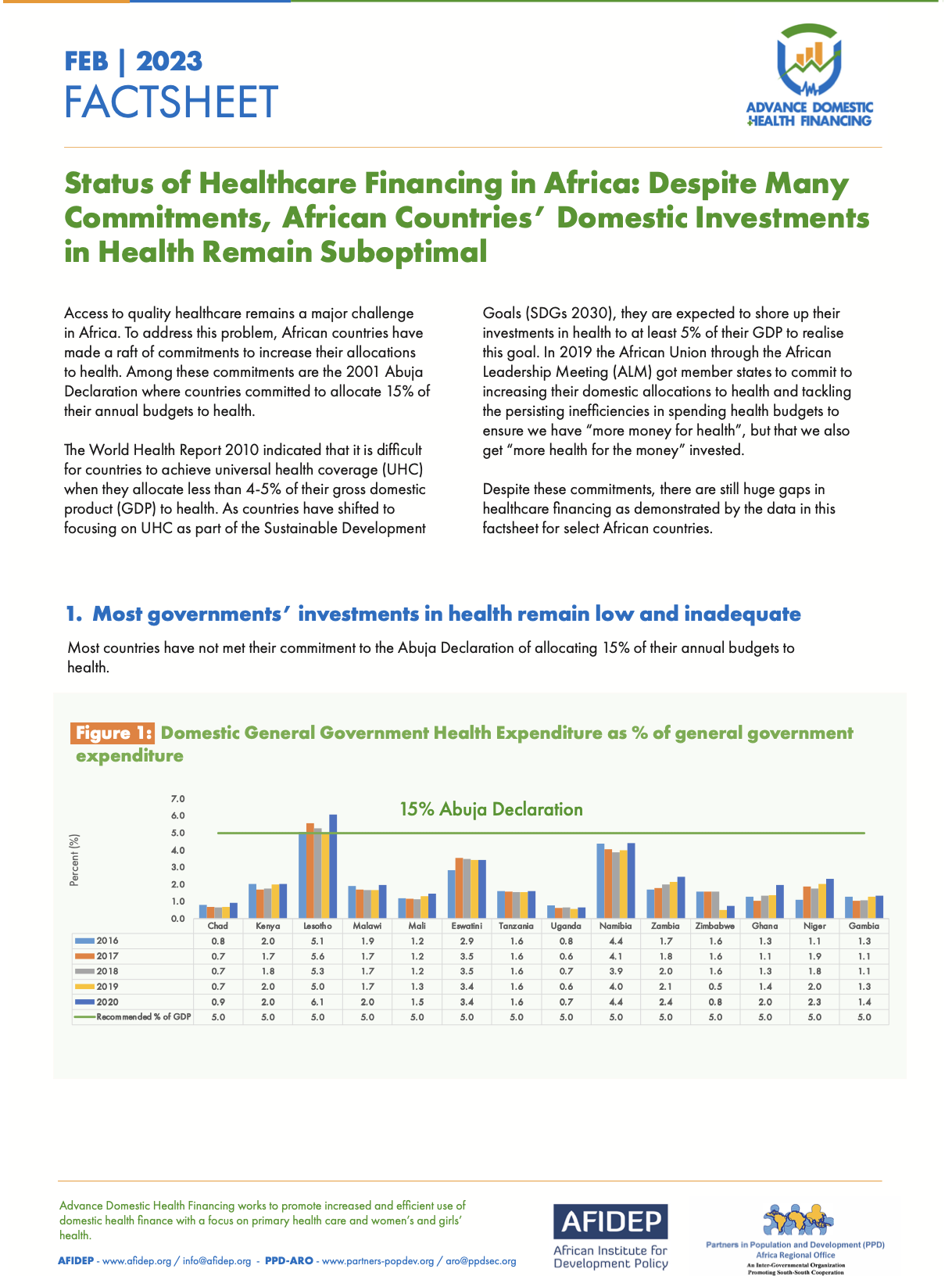
Access to quality healthcare remains a major challenge in Africa. To address this problem, African countries have made a raft of commitments to increase their allocations to health. Among these commitments are the 2001 Abuja Declaration where countries committed to allocate 15% of their annual budgets to health. The World Health Report 2010 indicated that it is difficult for countries to achieve universal health coverage (UHC) when they allocate less than 4-5% of their gross domestic product (GDP) to health. As countries have shifted to focusing on UHC as part of the Sustainable Development Goals (SDGs 2030), they are expected […]
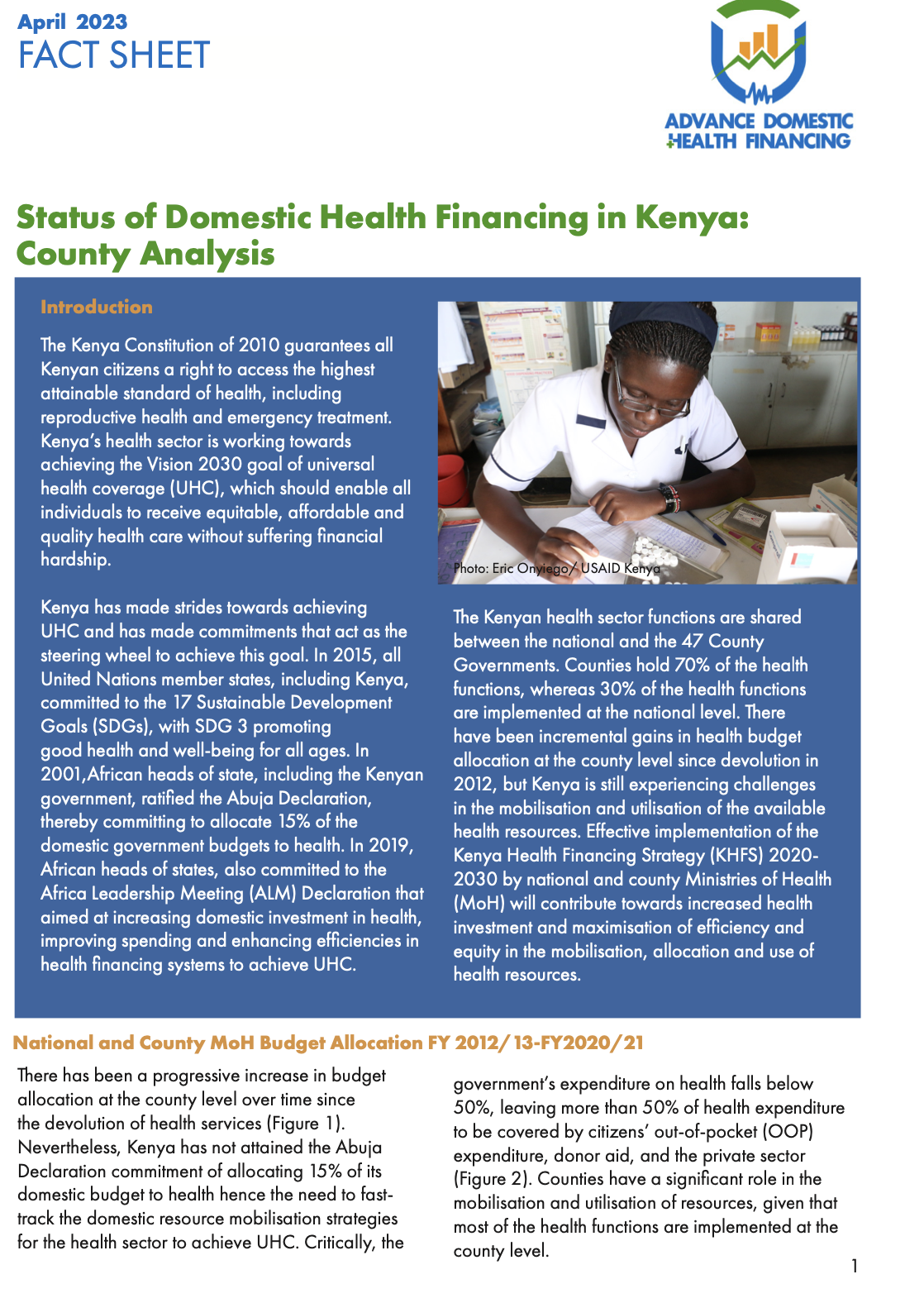
The Kenya Constitution of 2010 guarantees all Kenyan citizens a right to access the highest attainable standard of health, including reproductive health and emergency treatment. Kenya’s health sector is working towards achieving the Vision 2030 goal of universal health coverage (UHC), which should enable all individuals to receive equitable, affordable and quality health care without suffering financial hardship. Kenya has made strides towards achieving UHC and has made commitments that act as the steering wheel to achieve this goal. In 2015, all United Nations member states, including Kenya, committed to the 17 Sustainable Development Goals (SDGs), with SDG 3 promoting […]
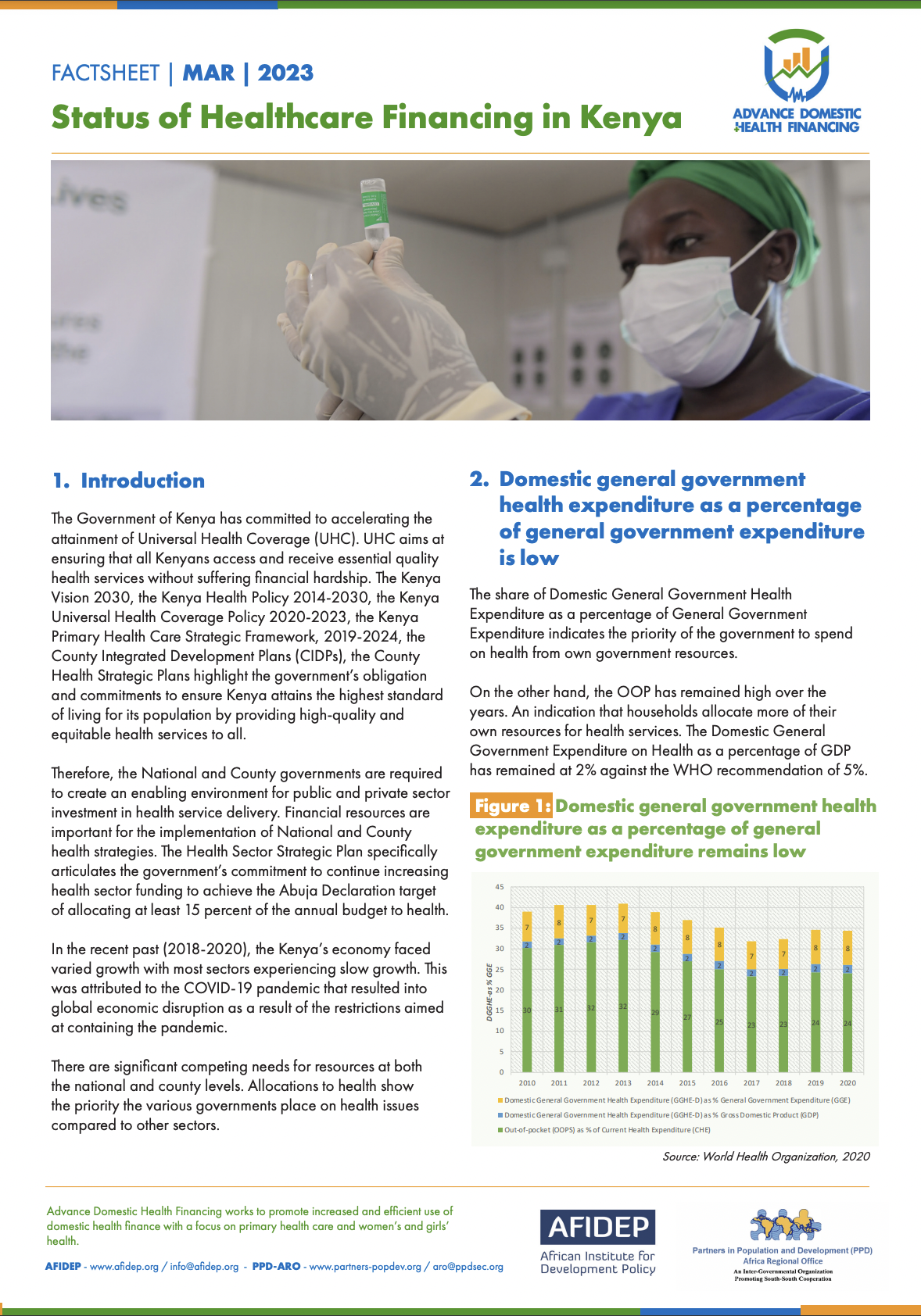
The share of Domestic General Government Health Expenditure as a percentage of General Government Expenditure indicates the priority of the government to spend on health from own government resources. On the other hand, the out-of-pocket expenditure has remained high over the years. An indication that households allocate more of their own resources for health services.
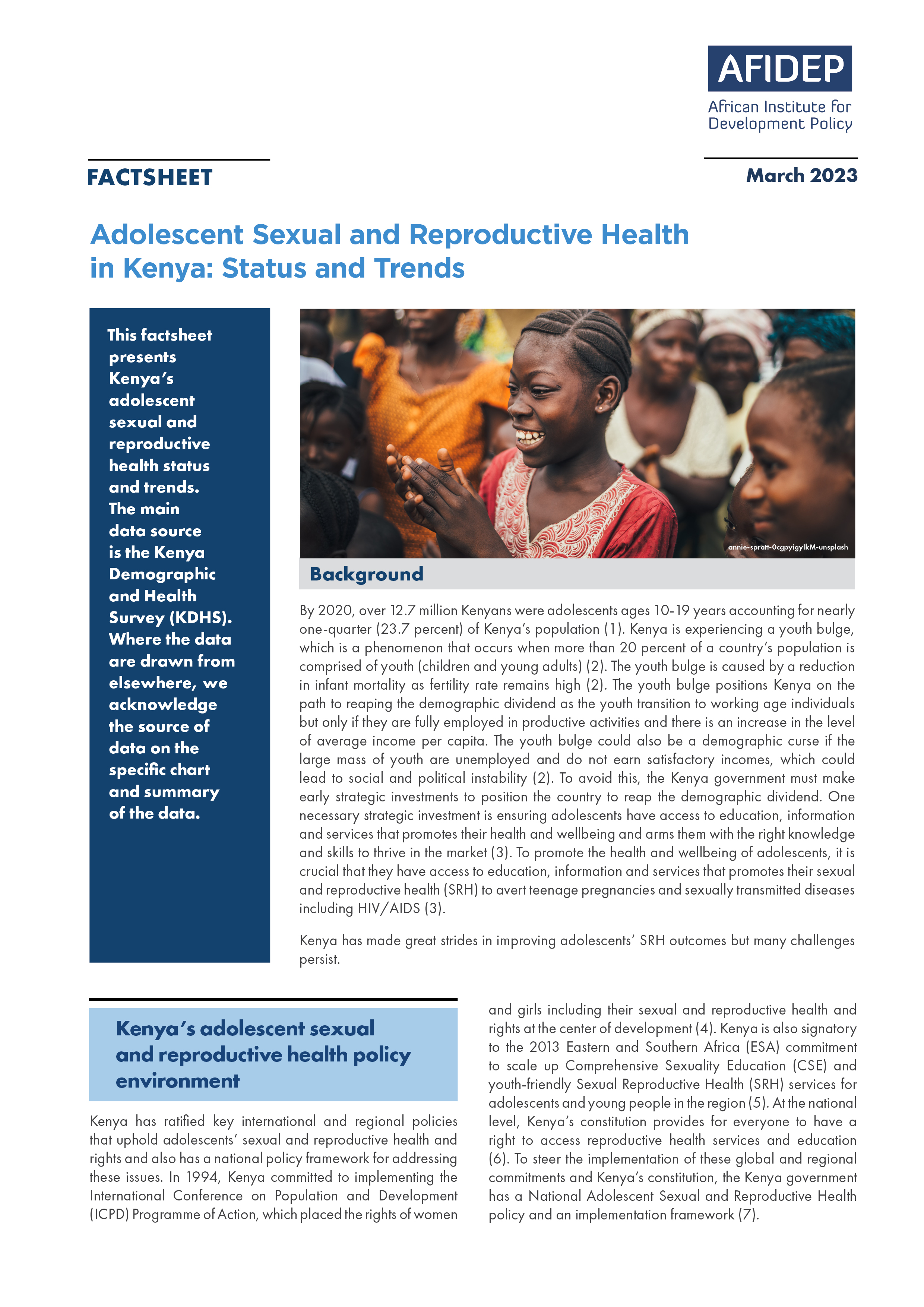
This factsheet presents Kenya’s adolescent sexual and reproductive health status and trends. The main data source is the Kenya Demographic and Health Survey (KDHS). Where the data are drawn from elsewhere, we acknowledge the source of data on the specific chart and summary of the data.
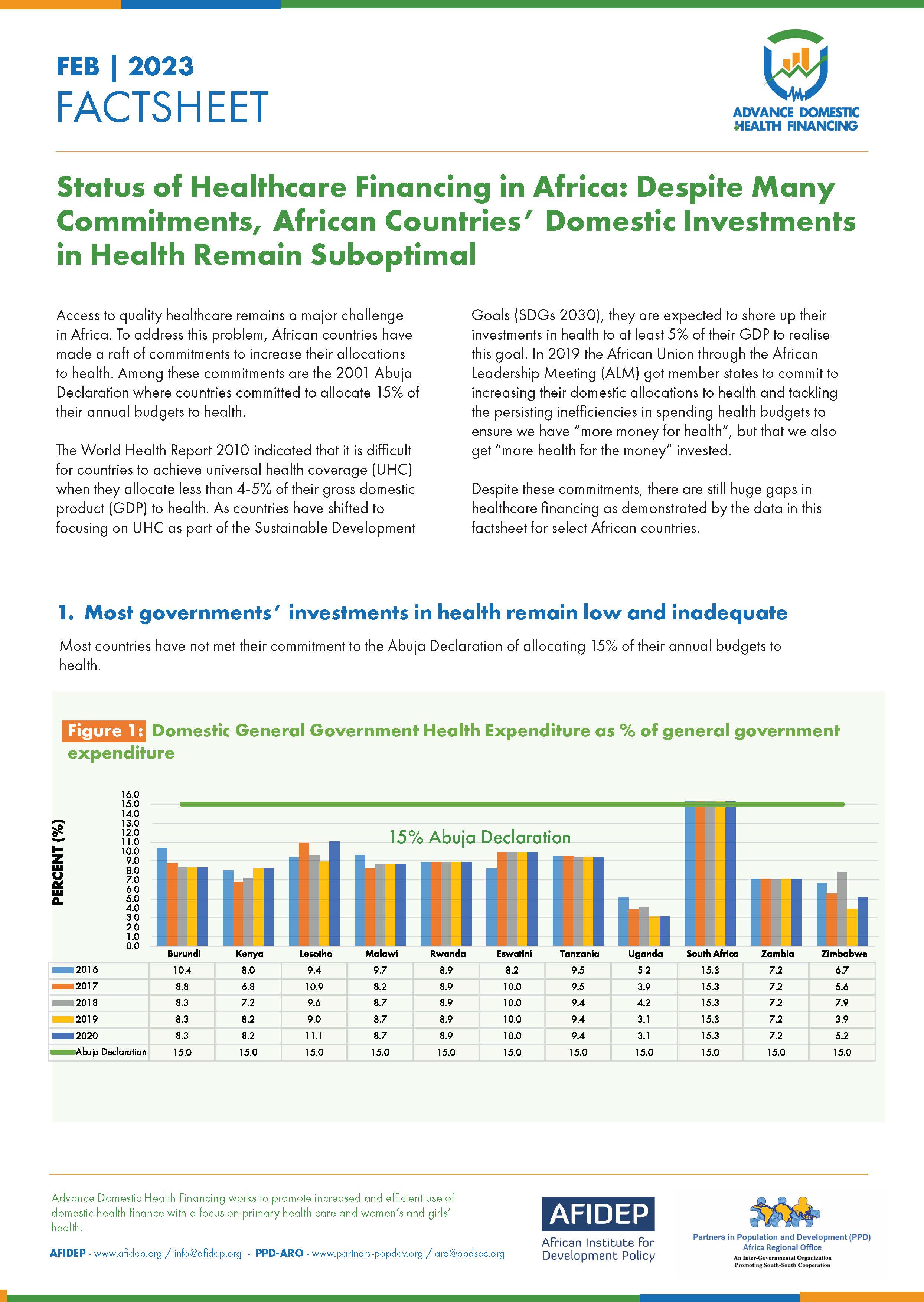
Access to quality healthcare remains a major challenge in Africa. To address this problem, African countries have made a raft of commitments to increase their allocations to health. Among these commitments are the 2001 Abuja Declaration where countries committed to allocate 15% of their annual budgets to health, and African Leadership Meeting (ALM) got member states to commit to increasing their domestic allocations to health and tackling the persisting inefficiencies in spending health budgets.
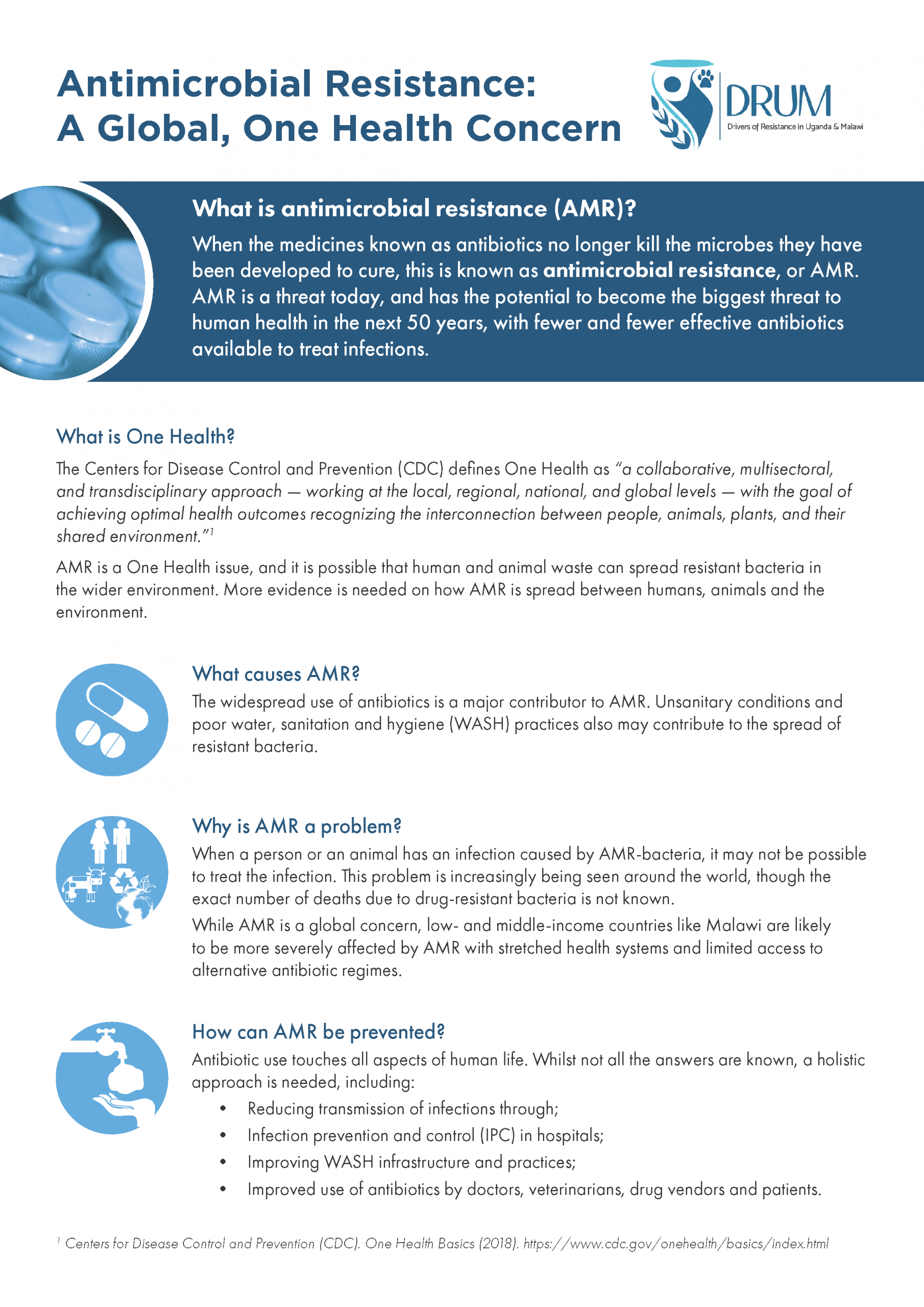
AMR is a One Health issue, and it is possible that human and animal waste can spread resistant bacteria in the wider environment. More evidence is needed on how AMR is spread between humans, animals and the environment. Infections caused by AMR-bacteria can increase the risk of spread of infection to communities and livestock and result in longer duration of illness, higher mortality rates, and increased costs of alternative treatment.

Le sepsis est une complication courante de l’infection qui entraîne souvent la mort ou une invalidité grave. On estime à 30 millions le nombre de cas de sepsis dans le monde chaque année, dont plus de 7 millions aboutissent à la mort. Le sepsis est en effet la deuxième cause de mortalité dans le monde et la principale cause de décès évitable. Vu les taux d’infection élevés, l’Afrique serait grandement touchée par le sepsis. Malgré le taux élevé de décès, le sepsis reste largement méconnu et peu priorisé par le grand public, les professionnels de la santé et les importants décideurs. La sensibilisation et la connaissance du sepsis et de son fardeau sur la société sont essentielles pour le prévenir et sauver des vies.
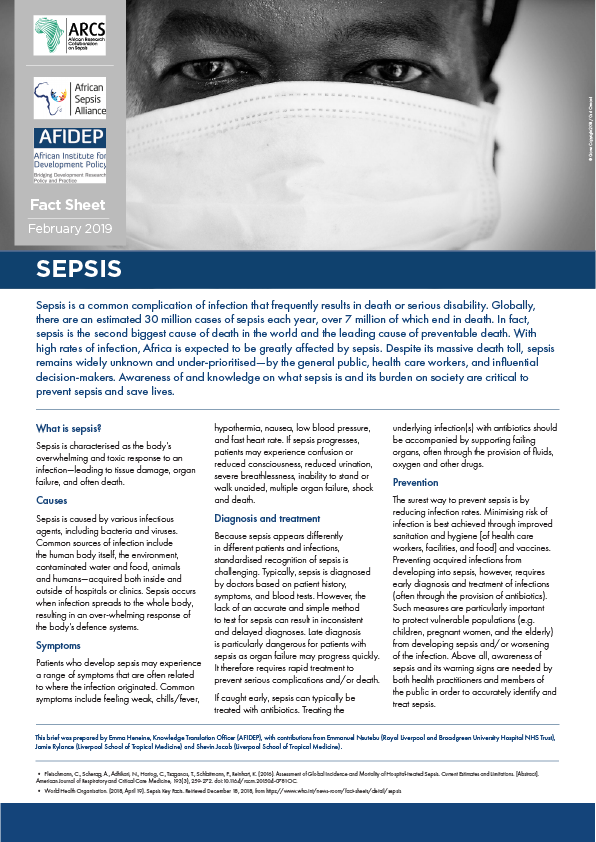
Sepsis is a common complication of infection that frequently results in death or serious disability. Globally, there are an estimated 30 million cases of sepsis each year, over 7 million of which end in death. In fact, sepsis is the second biggest cause of death in the world and the leading cause of preventable death. With high rates of infection, Africa is expected to be greatly affected by sepsis. Despite its massive death toll, sepsis remains widely unknown and under-prioritised—by the general public, health care workers, and influential decision-makers. Awareness of and knowledge on what sepsis is and its burden on society is critical to prevent sepsis and save lives.
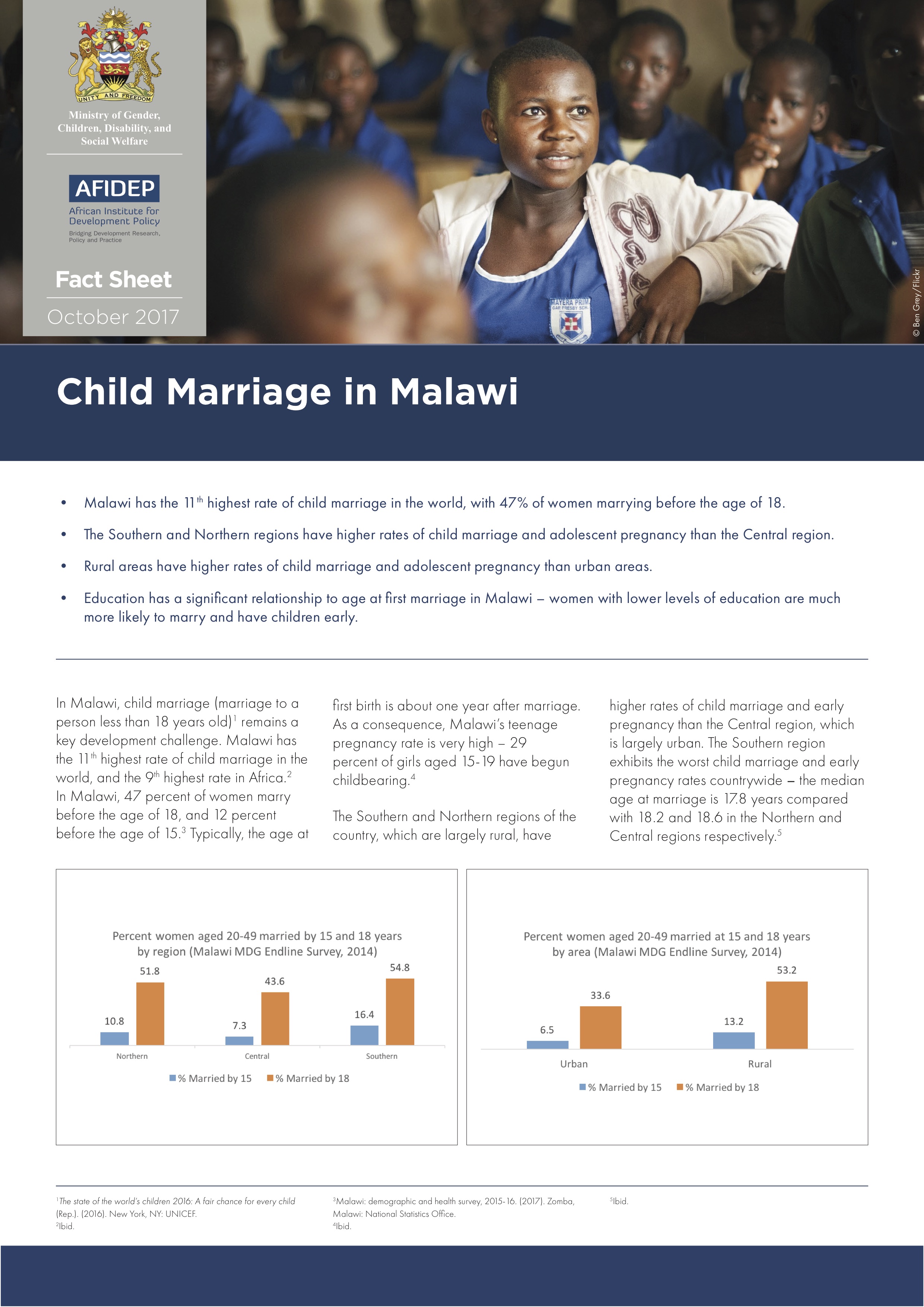
In Malawi, child marriage (marriage to a person less than 18 years old) remains a key development challenge. Malawi has the 11th highest rate of child marriage in the world and the 9th highest rate in Africa. 47 per cent of women marry before the age of 18 and 12 per cent before the age of 15. Typically, the age at first birth is about one year after marriage. As a consequence, Malawi’s teenage pregnancy rate is very high – 29 per cent of girls aged 15-19 have begun childbearing.
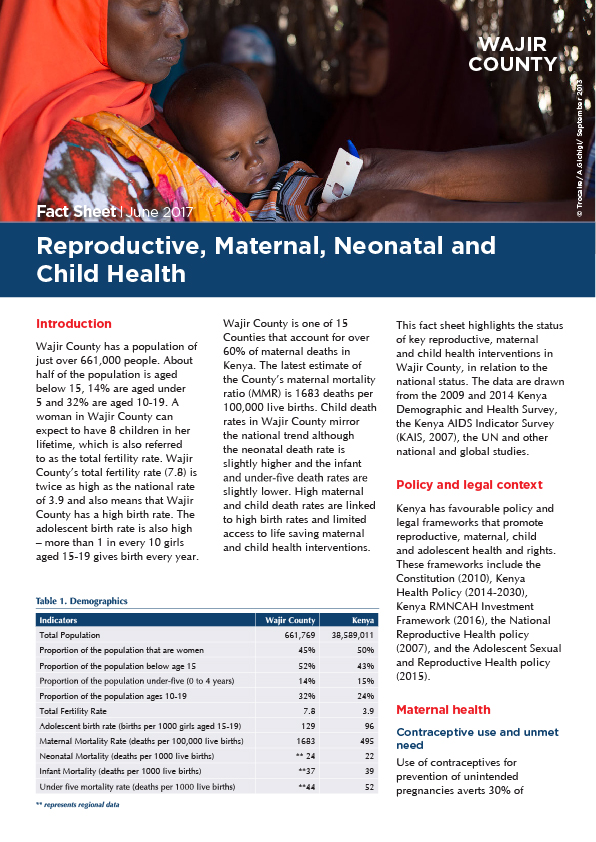
Wajir County has a population of just over 661,000 people. About half of the population is aged below 15, 14% are aged under 5 and 32% are aged 10-19. Wajir County’s total fertility rate (7.8) is twice as high as the national rate of 3.9 and also means that Wajir County has a high birth rate. The adolescent birth rate is also high – more than 1 in every 10 girls aged 15-19 gives birth every year. Wajir County is one of 15 Counties that account for over 60% of maternal deaths in Kenya.
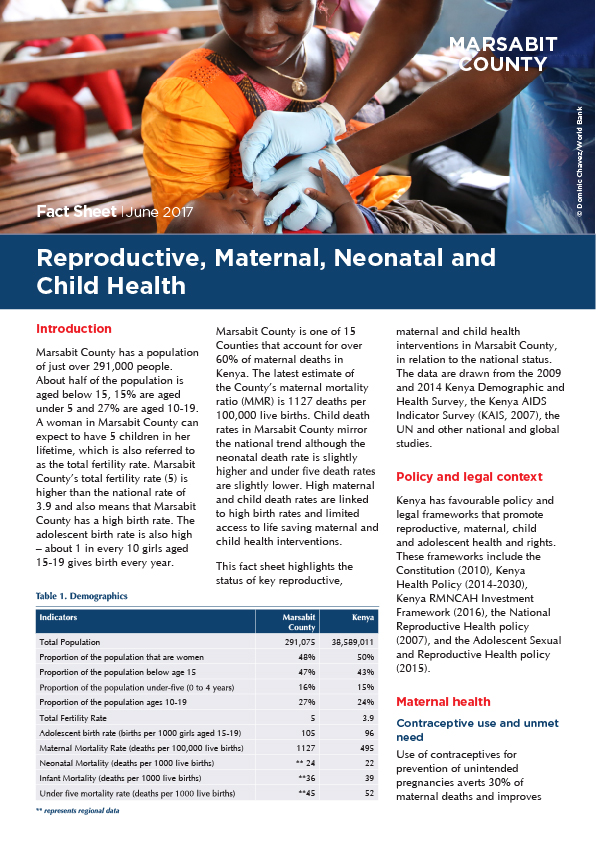
Marsabit County has a population of just over 291,000 people. About half of the population is aged below 15, 15% are aged under 5 and 27% are aged 10-19. Marsabit County’s total fertility rate (5) is higher than the national rate of 3.9 and also means that Marsabit County has a high birth rate. The adolescent birth rate is also high – about 1 in every 10 girls aged 15-19 gives birth every year. Marsabit County is one of 15 Counties that account for over 60% of maternal deaths in Kenya.

